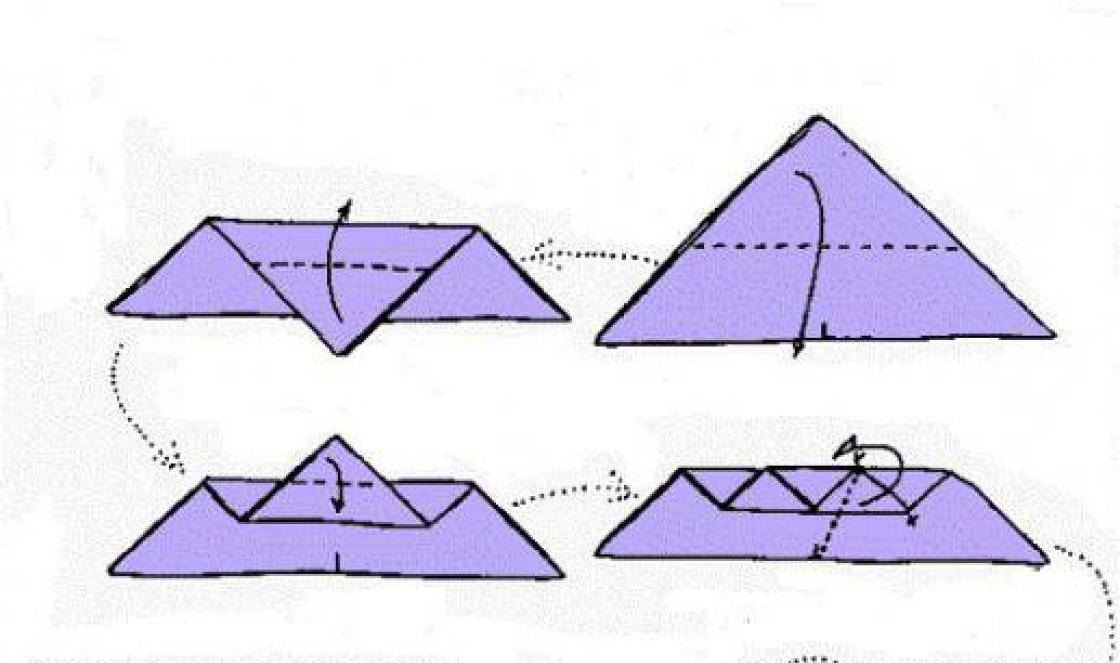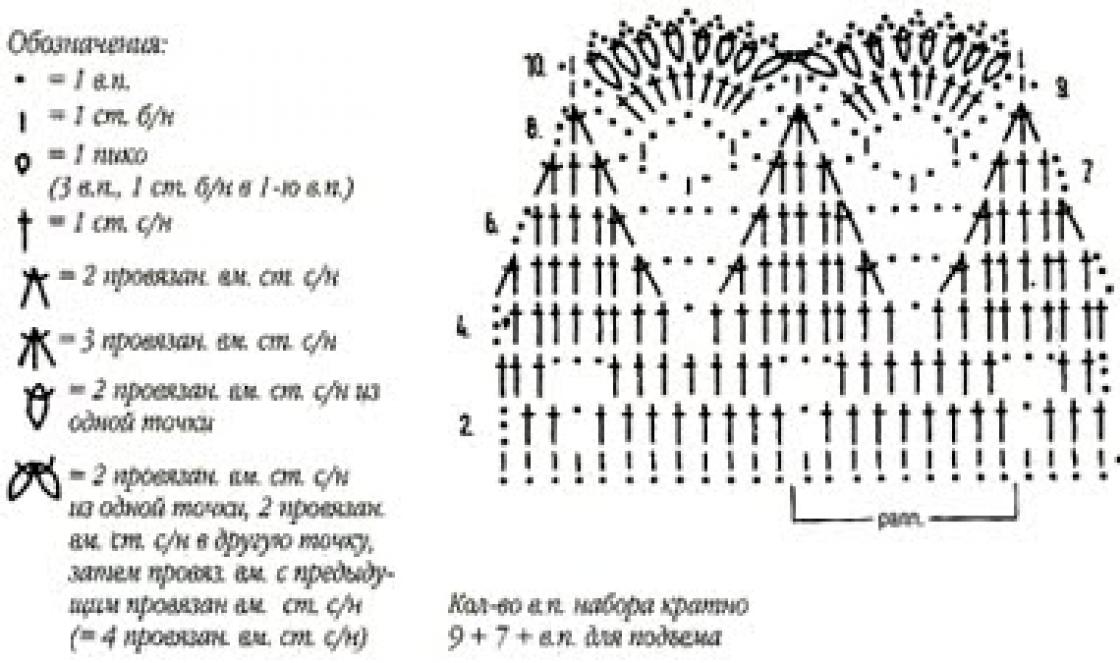January 1 was officially recognized as a holiday in the Labor Code adopted by the All-Russian Central Executive Committee on December 10, 1918. Clause 7 of Article 104 of the Appendix to the Code established rules on weekly rest and holidays. According to this regulatory document, January 1 became the first calendar day off of the year of six holiday dates established in honor of social and historical events.
In the same list of non-working holidays, January 1 was approved in 1922 by the Labor Code. Moreover, according to the same document, since 1922, calendar holidays became paid, and the duration of the working days preceding them was reduced to six hours. Shortened pre-holiday days were also paid in full.
 The situation with the first day of the year continued until 1929, when, by the Decree of the Council of People's Commissars of the USSR of September 24, 1929 “On working time and rest time in enterprises and institutions switching to a continuous production week,” calendar holidays were replaced by “revolutionary days.” The document excluded January 1 from paid days off - now on the first day of the year it was necessary to work, just like on weekdays. So January 1 became a regular working day and remained so until 1947 inclusive.
The situation with the first day of the year continued until 1929, when, by the Decree of the Council of People's Commissars of the USSR of September 24, 1929 “On working time and rest time in enterprises and institutions switching to a continuous production week,” calendar holidays were replaced by “revolutionary days.” The document excluded January 1 from paid days off - now on the first day of the year it was necessary to work, just like on weekdays. So January 1 became a regular working day and remained so until 1947 inclusive.
This day became a day off and holiday again, starting on December 23, 1947, after a decree of the Presidium of the Supreme Soviet of the USSR. It remained so until 1991 – that is, until the collapse of the USSR.
January 1, 1919 is the day of the formation of the Belarusian SSR.
On January 1, 1969, the first issue of the cartoon “Well, Just Wait!” was released.

World events
Throughout 2020, in the calendar of the Russian Orthodox Church, as well as in folk tradition, there are several dates set aside for the commemoration of the dead.Today we will tell you what 3 parental Saturdays will Orthodox believers have during Lent?. All of them are held in March 2020.
There are twelve parent days in total throughout the year. Ten of them are church-wide commemorations of dead Christians, and two more are memorial days celebrated “unofficially”, in folk tradition.
Most parenting days are held on Saturday and depend on the date of Easter.
Three church-wide parental Saturdays (out of ten) are held during. The strictest fast of the year begins on March 2, lasts 48 days and ends on Saturday April 18, 2020.
There is no day of remembrance for the dead on the first Saturday of Lent (March 7, 2020). Parents' Saturdays are held in the second, third and fourth weeks, with the reading of the Liturgy of St. John Chrysostom. This will accordingly be March 14, 21 and 28, 2020.
That is, parenting days in March 2020 will be as follows:
* March 14, 2020 (Saturday) - Commemoration of the departed during the 2nd week of Lent.
* March 21, 2020 (Saturday) - Commemoration of the departed during the 3rd week of Lent.
* March 28, 2020 (Saturday) - Commemoration of the departed during the 4th week of Lent.
Further, there are no parental Saturdays scheduled for April 4, 2020, April 11, 2020, and April 18, 2020. And the next parent’s day, Radonitsa, will be after Easter, 9 days later, on Tuesday, April 28, 2020.
When and where will the Eurovision Song Contest 2020 take place:
In 2020 regular (65th anniversary) song contest Eurovision 2020 will be held in the Netherlands (Holland).
Chosen as the venue for the show multifunctional arena "Rotterdam Ahoy" with a capacity of more than 16 thousand spectators, located in Rotterdam, the country's second largest city after the capital Amsterdam.
The event format includes two semi-finals and one final, which are traditionally held on Tuesday, Thursday and Saturday of the second full week of May.
In 2020, the dates for the Eurovision semi-finals and final will be as follows:
* 1st semi-final - May 12, 2020 (Tue).
* 2nd semi-final - May 14, 2020 (Thu)
* Final - May 16, 2020 (Sat.).
Who will represent Russia at Eurovision 2020:
The musical group that will go from Russia to Eurovision 2020 was named on March 2, 2020 in live"Channel One", in the final story of the information program "Time".Will represent our country at Eurovision 2020 group "Little Big"(literal translation into Russian - “Little Big”).

The group's musical style is quite unusual. The musicians themselves call themselves a “satirical art collaboration” (a satirical art project), which combines music, images and spectacle. After watching several videos of the group, I am confident that the guys will definitely conquer the European podium of popular music. Or, at a minimum, they will make an unforgettable impression on the prim Western public.
Current lineup of "Little Big":
- Ilya "Ilyich" Prusikin.
- Sergei "Gokk" Makarov.
- Sofya Tayurskaya.
- Anton Lissov.
That is, when and where will Eurovision 2020 take place?who will travel from Russia:
* Dates: May 12, 14 and 16, 2020
* Place - The Netherlands, Rotterdam.
* Representative from Russia - "Little Big".
New Year holidays (January 1st)
New Year- a holiday celebrated by many peoples in accordance with the accepted calendar, occurring at the moment of transition from last day year on the first day of the next year. The custom of celebrating the New Year already existed in Mesopotamia in the third millennium BC.
The beginning of the year on January 1 was established by the Roman ruler Julius Caesar in 46 BC. e. In Ancient Rome, this day was dedicated to Janus - the god of choice, doors and all beginnings. The month of January got its name in honor of the god Janus, who was depicted with two faces: one looking forward and the other looking back.
The history of the holiday
One of calendar holidays. Until the 15th century (perhaps also before the adoption of Christianity) in Rus', the new year began on March 1 according to the Julian calendar or on the day spring equinox. As evidence of this, the original names of some months have been preserved: October lat. octo - eighth, November lat. novem - ninth, December lat. decem - tenth.
Since the 15th century, the new year began on September 1; information about the celebration of the New Year appears from the end of the 15th century. The Parisian Muscovite Dictionary (XVI century) preserved the Russian name for the New Year holiday: The first day of the year.
Since 1700, by decree of Peter I, the New Year in Russia has been celebrated, as in other European countries, on January 1 (according to the Julian calendar).
Since 1919, the New Year holiday in Russia began to be celebrated in accordance with the Gregorian calendar. From 1930 to 1947, January 1 was a regular working day in the USSR. On December 23, 1947, by decree of the Presidium of the USSR Armed Forces, January 1 became a holiday and a day off. According to the law of September 25, 1992 in the Russian Federation, January 2 became a day off. Since 2005, New Year holidays have been established in Russia from January 1 to January 5, and these days have been declared non-working days (before that, only January 1 and 2 were non-working days), and taking into account weekends and Christmas - an official holiday - a five-day holiday working week lasts at least eight days (in practice, starting from the 2005 new year - up to 10 days, including non-working days until January 1 and the transfer of weekends).
Non-working since 2012 holidays are days before January 8, and weekends falling during this period (in 2012 - January 5 and 6) will be postponed to May holidays(every year - on different days).
Christmas tree
New Year's Eve is a very significant holiday in many countries. And is accompanied by a variety of pop events, feasts, folk festivals. According to tradition, the house is installed christmas tree. In many countries they put it up for Christmas and call it a Christmas tree. A similar tradition existed in Russia for a long time, but in 1916, during the First World War, the Christmas tree was banned by the Holy Synod as a “German custom” and again allowed by a special decree of the Komsomol before the new year 1936, but as a New Year tree.
New Year's table
When celebrating the New Year, loved ones gather around the table.
In the version of the New Year celebration, those gathered first “see off” the year - remember what it was remembered for or what was in it. At 0 o'clock 0 minutes, on January 1, the chimes strike. With the first chime, marking the arrival of the new year, it is customary to clink glasses of champagne and make a wish.
Auto-generated image based on Google search results for the holiday name.
Image source: https://images.google.ru/ (electronic resource)
Today it is difficult to imagine the end of the calendar year in Russia without a magnificent celebration. This tradition appeared in Russia not so long ago. For many years V Soviet era after celebrating the New Year, the next day, January 1, people had to go to work.
With the adoption of Christianity by Vladimir Svyatoslavovich in the 10th century, the history of the Russian church began to exist, and with it the New Year began to be celebrated according to Byzantine custom - September 1. During the reign of Peter I, the chronology system changed - the holiday began to be celebrated on January 1 in 1700.
After Peter's reform, the Church New Year in Russia continued to be celebrated on September 1, and January 1 was considered a secular holiday.
This continued until the Great October Revolution 1917, after which the authorities canceled all holidays that existed in the tsarist state. The next year after the “October” events, Russia, according to the decree of Vladimir Lenin, switched to the Gregorian calendar - so February 1, 1918 turned into the 14th. From that moment on, Christmas began to be celebrated on January 7 - instead of December 25 according to the old style.
Until 1929, when the Council of People’s Commissars of the USSR issued a decree “On working time and rest time in enterprises and institutions switching to a continuous production week,” January 1 was a non-working and holiday. With the adoption of this document, the word “holidays” was replaced by “revolutionary days.”
The abolition of Christmas in 1929 led to the fact that former holidays turned into working days. With the recognition of the Christmas tree as a “priestly” custom, the following propaganda slogans began to appear: “Only those who are a friend of the priests are ready to celebrate the Christmas tree!” “The kids are being lied to that Santa Claus brought them gifts. The religiosity of the children begins with the Christmas tree. The ruling exploiting classes also use the “cute” Christmas tree and the “kind” Santa Claus in order to make obedient and patient servants of capital out of the working people,” said anti-religious propaganda during Christmas.
In the first half of the 30s, Christmas did not officially exist - it was considered a relic of the past.
As for the New Year, the Soviet authorities considered it primarily a children's holiday, hence the lack of need to exempt adults from work on December 31 and January 1.
During the “moratorium” on the New Year, there were brave souls who still celebrated the holiday in secret - they put up a Christmas tree and tightly curtained the windows. There is an assumption that the tradition of celebrating the holiday with a feast, and not with ceremonial dances, developed precisely at a time when the New Year had to be celebrated in secret, so as not to wake up the neighbors.
They had to hide until the Pravda newspaper published a letter from statesman Pavel Postyshev on December 28, 1935, in which the author protested common man yearning for celebration and fun. In his letter, he addressed the authorities and called for “organizing collective Christmas trees for everyone.” After the publication, Joseph Stalin returned the New Year to the people with a decorated Christmas tree, but there was no talk about a day off on January 1 yet. The day after the holiday, people went to work.
Justice triumphed on December 23, 1947, when the USSR government made January 1 a day off. “The day of January 1 - New Year's holiday - is considered a non-working day,” the text of the decree briefly stated. However, in the case when a holiday fell on a weekend, it was not transferred to the next working day, but disappeared.
“By declaring January 1 a day off, the authorities legitimized the actual practice. Since,
After spending the night off, citizens showed up to work, to put it mildly, not in the best shape,”
- said Irina Osipova, curator of the then exhibition “The First Day of the Calendar” in 1948.
Almost 60 years later, in 1991, Christmas also returned to the homes of Russians - then January 7 was declared a day free from work. That year they showed Christmas services on TV and told people about the rules for holding the holy holiday.
Two years later - in 1993 - Russians were released from work on January 2. The story continued in 2004, when Labor Code made new changes and gave Russians the right to rest for 5 whole days - from January 1 to 5. Together with the Christmas celebration on January 7, it turned out to be six free days.
Some were pleased with the reform, while for others even these six days were not enough for proper rest. These disagreements led to the fact that in 2008, the Speaker of the Federation Council, Sergei Mironov, proposed extending the May holidays, shortening the New Year holidays. At the same time, Mironov previously proposed making December 31 a non-working day, so that people “wouldn’t pretend to be working, wouldn’t be foolish in the workplace, but would rather decorate the Christmas tree and prepare at home for the holiday.”
Four years later, in 2012, it was finally decided to extend the holidays to eight days - from January 1 to January 8. Taking into account the weekend, the holiday “time off” was about 10 days.
The authorities of foreign countries are not as generous to their citizens regarding the New Year holidays as Russian ones. For example, Americans only have time to recover from holiday dinners on two separate days—December 25 and January 1. The British walk a day longer - two days at Christmas and one day at New Year's. If the holiday falls on a Sunday, they will get a bonus Monday.
Japanese policy on the issue of holidays is similar to Russian. Since 1948, the Japanese have received the official right not to work from December 31 to January 3.
At the same time, some companies stop working as early as December 29. In North Korea, December 31 and January 1 are considered national holidays, but holidays for the local population are more an occasion for active homework and going to a demonstration than for relaxation.
Despite the fact that Brazil celebrates New Year and Christmas, there are no days off on these days. Brazilians have time to relax and have fun in February, when the country hosts a national carnival for four days. Although these days are not officially considered weekends, local residents certainly have no time for work during this period.
In Germany, as in many other European countries, Christmas is treated with great reverence. Hence there are two days off - December 25 and 26. Also, as a bonus, the Germans have a day off on January 1st. According to Jewish traditions in Israel, the New Year (Rosh Hashanah) this year was celebrated from September 20-22: it is on these days that Israelis are freed from work. In Belarus, holidays begin on December 25 - the day of celebration Catholic Christmas. The fun continues on December 30th and ends on January 2nd.
By the way, during these new year holidays you can go to the cinema to see a movie
The first official regulatory document in the history of Russia that fully regulates labor relations was the Code of Labor Laws, adopted by the All-Russian Central Executive Committee on December 10, 1918. The Code contained an Appendix to Art. 104 “Rules on weekly rest and holidays.” Clause 7 of this Appendix listed non-working holidays established in memory of historical and social events:
January 1 – New Year;
January 22 – day January 9, 1905;
March 12 – overthrow of the autocracy;
March 19 is the day of the Paris Commune;
May 1 – International Day;
November 7 is the day of the Proletarian Revolution.
Local trade union councils, with the consent of the People's Commissariat of Labor, could establish, in addition to the above, special days of rest (no more than 10 per year). These days were supposed to be coordinated with holidays accepted in the area, as a rule, religious ones. Their introduction should have been communicated to the population through publication. But at the same time, such additional days of rest were not paid.
A similar list of non-working holidays was contained in Art. 111 of the Labor Code of 1922. In Art. 112 of the Labor Code of 1922 also contained a provision for the establishment by labor departments, in agreement with the provincial councils of trade unions, of special holiday days of rest (no more than ten per year), corresponding to local conditions, the composition of the population, national holidays etc. At the same time, such additional days of rest also began to be paid. On the eve of holidays and days of rest, the working day was reduced to six hours, and pre-holiday days were paid as full time.
The number of additional days of rest was gradually reduced. Since 1925, there have been eight of them, since 1927 - seven, since 1928 - six. At the same time, the Decree of the All-Russian Central Executive Committee, Council of People's Commissars of the RSFSR dated July 30, 1928 “On amendments to Articles 111 and 112 of the Labor Code of the RSFSR” added another non-working day to May Day - May 2. Thus, two whole days were allocated for the celebration of International Day.
January 1 remained a non-working and holiday day in the USSR until 1929. The situation changed with the adoption of the Resolution of the Council of People's Commissars of the USSR dated September 24, 1929 “On working time and rest time in enterprises and institutions switching to a continuous production week,” in which the concept of “holidays” was replaced by “revolutionary days”, when work was prohibited. These included:
January 22 is the day of remembrance of January 9, 1905 and the memory of V.I. Lenin;
May 1 and 2 – days of the International;
November 7 and 8 are the anniversary days of the October Revolution.
As for the New Year, on this day it was supposed to work on a general basis. January 1 remained a regular working day in the USSR until 1947 inclusive.
In 1945 to general public holidays Victory Day was added - May 9. However, by 1948, it lost its non-working status, although it was considered a holiday due to the entry into force of the Decree of the Presidium of the Supreme Soviet of the USSR dated December 23, 1947.
Thanks to this Decree, January 1 has again become a New Year's non-working holiday. Victory Day remained a labor day until 1965, when L.I. Brezhnev, in honor of the 20th anniversary of the end of the Great Patriotic War, signed a decree recognizing May 9 as a non-working holiday.
In the mid-1960s. The May Day holiday received a new name: International Day (May 1 and 2) was renamed International Workers' Day.
Since 1966, in accordance with the Decree of the Presidium of the Supreme Soviet of the USSR of May 8, 1965, International Women's Day has become a holiday and a non-working day.
According to Art. 65 of the Labor Code of the RSFSR of 1971 established the following non-working holidays:
January 1 - New Year;
March 8 - International Women's Day;
May 1 and 2 - International Workers' Day;
May 9 - Victory Day;
November 7 and 8 are the anniversary of the Great October Socialist Revolution;
December 5 is Constitution Day of the USSR (from 1978 moved to October 7 due to the adoption of the new Constitution of 1977).
In this composition, holidays survived until the collapse of the USSR and even survived it slightly.
Sources:
1. Labor Code of 1918 (adopted by the All-Russian Central Executive Committee) // SPS ConsultantPlus.
2. Resolution of the All-Russian Central Executive Committee of November 9, 1922 “On the implementation of the Labor Code of the R.S.F.S.R. ed. 1922" (together with the Code of Laws about Labor R.S.F.S.R.").// SPS ConsultantPlus.
3. Resolution of the All-Russian Central Executive Committee of 05/05/1925 “On amendments to Art. 112 of the Labor Code." // SPS ConsultantPlus.
4. Resolution of the All-Russian Central Executive Committee, Council of People's Commissars of the RSFSR dated December 27, 1927 “On amendments to Articles 111 and 112 of the Code of Laws about Labor R.S.F.S.R.”// SPS ConsultantPlus.
5. Resolution of the USSR Central Executive Committee dated April 23, 1928 “On holidays, dedicated to the day International, and about special days of rest." // SPS ConsultantPlus.
6. Resolution of the All-Russian Central Executive Committee, Council of People's Commissars of the RSFSR dated July 30, 1928 “On amendments to Articles 111 and 112 of the Code of Laws about Labor R.S.F.S.R.”// SPS ConsultantPlus.
7. Law of the RSFSR of December 9, 1971 “On approval of the Labor Code of the RSFSR” (together with the Code). // SPS ConsultantPlus.
8. Roshchupkina E. New Year's and May holidays: a story with a continuation. // Kadrovik.ru - 2012, No. 7.





